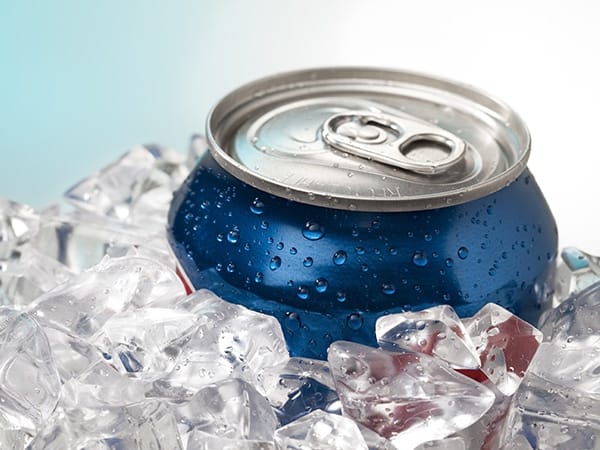No Sweat – Minimizing Door Condensation

Let’s take a little vacation. Picture yourself on the beach with a can of your favorite cola in hand. The soda is ice cold, but the outside air is sunny and 75°F. The problem? Your hand is soaked with condensation from the can, causing you to hunt for the nearest koozie.
The same problem can occur with your refrigerated display cases. Warm air in the building mixes with the cool air inside the case and causes condensation buildup on your display case doors. Foggy display cases can decrease your sales if customers cannot see the products inside. You can’t afford to miss any potential sales opportunities, whether impulsive or not. Here are a few common issues that may cause door condensation and what you can do to minimize it.
Power Supply
A common cause of door condensation is insufficient incoming voltage and amperage. Check that the amperage input matches the numbers on the display case dataplate. Without proper electrical input, components like the case anti-condensate heater will not operate at full capacity, causing condensation buildup. The case should receive a minimum of 115V for full operation. If the voltage is sufficient but the amperage is low, you may need to replace a burned out heater with a new heater.
Store and Surface Temperature
The surface temperature of your commercial refrigerator door must be greater than the dew point temperature of your store. The surface temperature of your case should be 58°F or more in a standard 75°F room. Case door temperatures may be too cold as a result of gasket, insulation, or cabinet air complications. Sweating may occur if your store dew point rises above that 58°F. Increasing air conditioning usage may decrease room temperature, but not necessarily decrease room humidity. Have your HVAC technician install or check your store dehumidification system to help remove excess moisture in the air.
Interior Case Temperature
Another factor that may cause door sweating is interior case temperatures. For ice cream products, a case colder than -15°F can cause sweating. Frozen food products stored at temperatures colder than
-10°F may also risk sweating unnecessarily. Talk to your technician about adjusting your temperatures if your case temperatures are not above these minimum recommendations.
These are just a few reasons for condensation occurring on your case doors; there could be other explanations. If you cannot identify the cause of the condensation, we recommend talking to your technician. And then take that vacation with your cold drink in hand.
